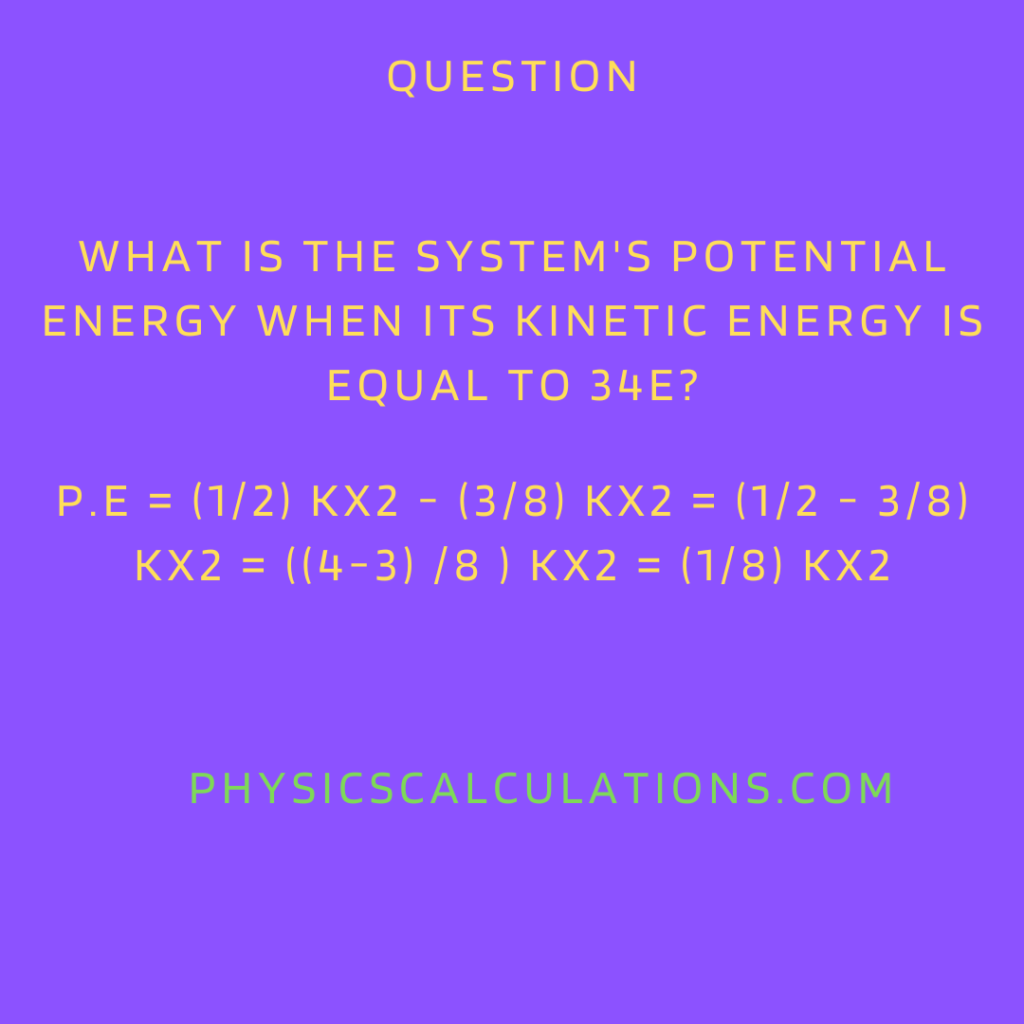Solution
what is the system’s potential energy when its kinetic energy is equal to 34e?
The answer to the above question is (KA2)/8
Explanation
Law of Conservation of Energy
Law of conservation of energy states that energy can neither be created nor destroyed but can be transferred from one medium to another.
Additionally, the law states that in an isolated or closed system, the total amount of energy is always constant, although energy may be changed from one form to another.
Data

The net energy in a system is
Net Energy (Enet) = Potential Energy (P.E) + Kinetic Energy (K.E)
Enet = P.E + K.E
We identify the net energy in a simple harmonic motion as
Enet = (1/2) Kx2
Hence, we can insert the above equation into Net Energy (Enet) = Potential Energy (P.E) + Kinetic Energy (K.E) to obtain
(1/2) Kx2 = P.E + K.E
and from our question, the kinetic energy, K.E = (3/4)E
Let’s assume that E = Net Energy = Enet = (1/2) Kx2
We can now rewrite the kinetic energy as
K.E = (3/4) x E = (3/4) x Enet = (3/4) x (1/2) Kx2 = (3/8) Kx2
Thus, the kinetic energy is K.E = (3/8) Kx2
| You may also like to read: |
| Simple Harmonic Motion Formulae |
Solution
we can now insert the above expression into (1/2) Kx2 = P.E + K.E to get
(1/2) Kx2 = P.E + (3/8) Kx2
It is now time to make the potential energy (P.E) subject of the formula
P.E = (1/2) Kx2 – (3/8) Kx2
The above equation can be simplified into
P.E = (1/2) Kx2 – (3/8) Kx2 = (1/2 – 3/8) Kx2 = ((4-3) /8 ) Kx2 = (1/8) Kx2
Therefore, the system’s potential energy is (1/8) Kx2
Drop a question in the comment section if you have a challenge with the question: “what is the system’s potential energy when its kinetic energy is equal to 34e?”
You may also like to read:
A Small Rock with Mass 0.20 kg is Released
a photon with an energy of 1.33
The amplitude of a lightly damped oscillator decreases by 3.0% during each cycle.
what is the object’s velocity when its potential energy is 23e?
Sources: